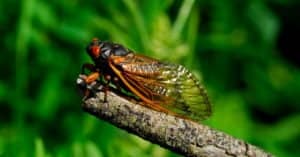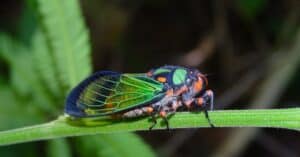In the last 17 years, the majority of residents in Maryland haven’t seen so much as a single cicada. There are people who will soon see the massive Brood X making its way across the state, especially in the states nearby. While it may seem alarming to see so many at once, these insects will provide plentiful nutrients for many of the animals in the area. They don’t have the same damaging nature as locust swarms would, so there’s no need to be afraid or to spray pesticides.
However, cicadas can cause a lot of noise, up to 120 decibels. After the insects emerge from underground towards the end of their 17-year life cycle, they come out of their shells to reproduce and then die shortly after. As cicadas spend this time aboveground, they eat tree sap, and the females cut slits in tree branches to set eggs inside. This can injure trees and shrubs that are young or not in ideal health.
What does the Maryland Center for History and Culture have to say?
A tweet from the Maryland Center for History and Culture sheds light on the constant fascination that researchers have had for this animal, dating back to the 18th century. One such researcher was Benjamin Banneker, and his discoveries of their migration patterns and life is now featured at the center. This particular brood (Brood X) was studied as early as the 1700s by Pehr Kalm, noticing the sudden appearance of cicadas when they emerge.
What does the Biological Honor Society TriBeta of the Notre Dame of Maryland have to say?
Cicadas are largely not harmful. But their large numbers have pushed local Maryland citizens to take action against possible damage from their eggs. These insects tend to leave behind eggs on tree branches. The Biological Honor Society TriBeta of the Notre Dame of Maryland took action to protect vulnerable trees, lining them with fine-mesh netting. The cicadas will have to look elsewhere to leave their eggs behind as they arrive.
Getty Images News Features Cicadas in Takoma Park
Brood X cicadas are expected to arrive in the trillions, and there are many areas of Maryland that have already seen them arise. In Getty Images News, many viewers have already sent images of the empty shells that are being left behind by the cicadas in Takoma Park. They emerge from the soil as their temperatures pass 64°F, which varies from state to state.
Update from WJZ CBS Baltimore
The reason Maryland has yet to see the largest emergence of the Brood X cicadas has to do with recent cold weather. This is according to reports from WJZ CBS Baltimore. As recently as May 15th, the lowest temperatures were still reaching just 42°F. Still, once the temperatures rise a little more, the news station believes that there is much more in store. They stated that Maryland will soon be the epicenter of this rare event. If researchers’ predictions are correct, some areas will see up to 1.5 million cicadas per acre as the insects emerge at the start of June 2021.
Cicada Brood X News & Information
Brood X is currently (spring 2021) emerging on the east coast of the United States. More information and coverage can be found here!
- Cicadas in New York: What’s Happening Now?
- Cicadas in Pennsylvania: What’s Happening Now?
- Cicadas in Virginia: What’s Happening Now?
- Cicadas in Tennessee: What’s Happening Now?
- Cicadas in Washington, DC: What’s Happening Now?
- Cicadas in Maryland: What’s Happening Now?
- Here’s What 1.5 Million Cicadas Looks Like
- Will Cicadas Cause More Snakes? Copperheads?
- Cicada Brood X 2021: What is it and should you be concerned?
- Cicadas vs Locusts: What’s The Difference?
Up Next…
- Why Do Cicadas Only Come Out Every 17 Years?: Cicadas appear every 17 years. Why? Find out here.
- Will Cicadas Eat My Tomato Plants?: Do cicadas like tomatoes? Find out what you need to do to keep your tomatoes safe.
- Can Dogs Eat Cicadas?: Is your dog going to eat cicadas? Find out what can happen if your dogs do eat cicadas.
The photo featured at the top of this post is © Georgi Baird/Shutterstock.com
Thank you for reading! Have some feedback for us? Contact the AZ Animals editorial team.





